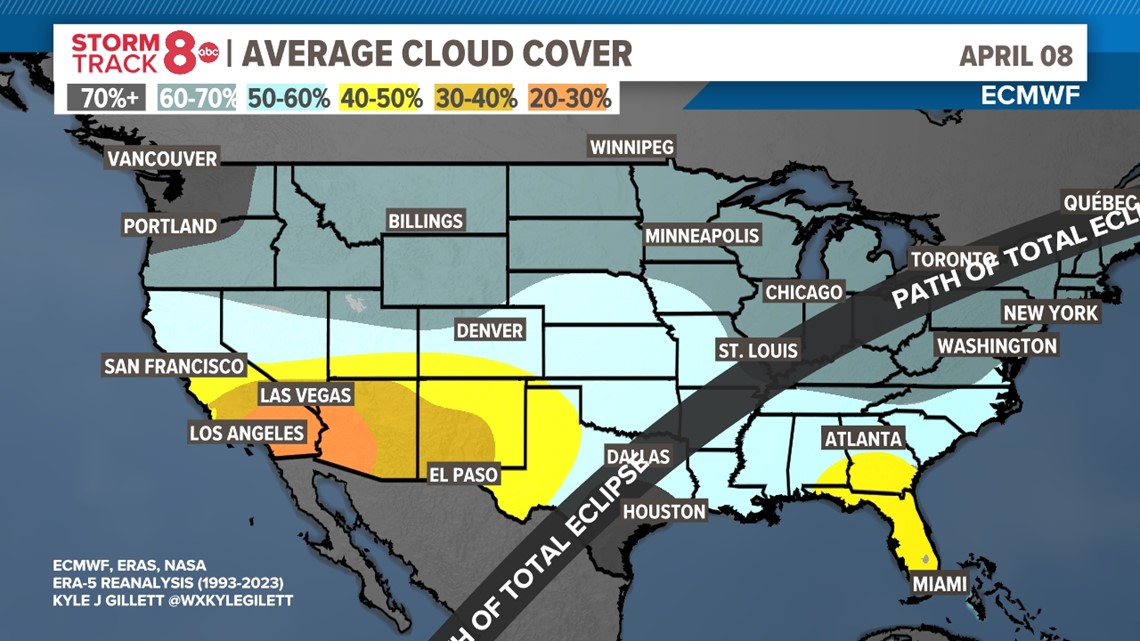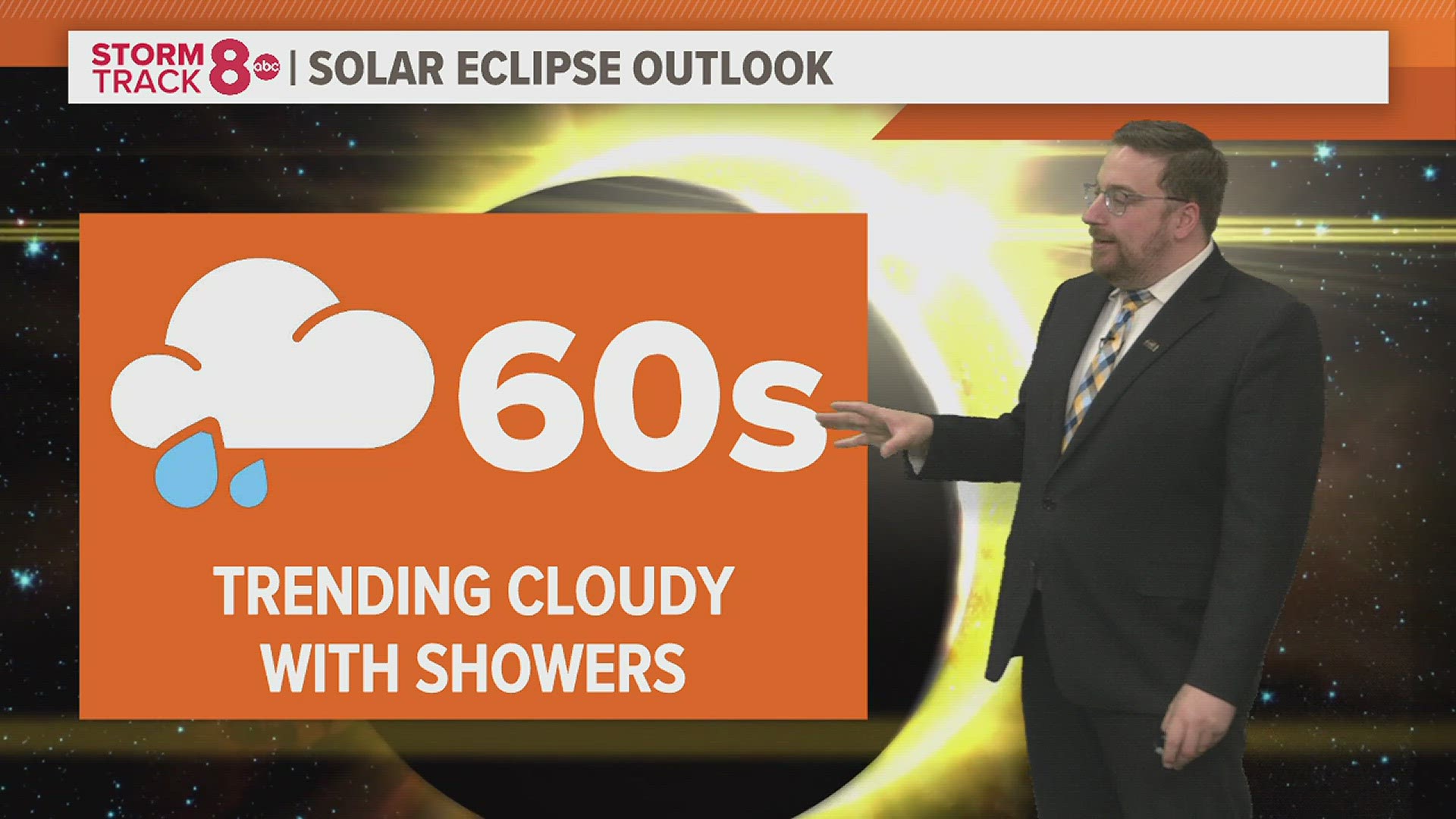MOLINE, Ill — We're now one month away from one of the greatest shows in the sky during our lifetime, the Great Northern American Eclipse! Other than the eclipse itself, the forecast will be getting quite a bit of attention in the coming weeks. Which areas of the country will be clear and which will be cloudy? We can use past weather data to determine what areas stands the best chance at getting a spectacular view in early April.
Solar eclipse cloud coverage in the Northwest, Midwest and Northeast
Using past sky condition data from 1993 through 2023, along with a reanalysis of computer model data, we can paint a fairly clear picture of where skies will likely give eclipse observers some problems. This includes areas in the Pacific Northwest, Midwest and Northeast, where an active storm track typically lies. This period can be quite volatile as the seasons are still in transition, with occasional cold air plunging in from the north while much warmer air attempts to move in from the south.


Historically speaking, those corridors see an average of 60% or more average cloud cover on this day, versus a more clear and sunny desert southwest.


Specifically in the Quad Cities, 61% of April 8 days in the Quad Cities since 1872 had cloud cover present. 46% had measurable rainfall. April 8 has an average high temperature of 55.7 degrees and an average low of 36.3 degrees. The average rainfall for the date is 0.10 inches.
Solar eclipse timing is somewhat on our side
For this total solar eclipse, it will begin in the Quad Cities around 12:47 pm with totality occurring around 2:03 pm, and wrapping up around 3:18 pm. This time of day, depending on the weather pattern in play, generally tends to favor more mixing of the air, including dry air to either clear clouds and fog out, or keep most of them at bay until later in the afternoon.
When can we count on the first high-confidence forecast update?
When it comes to forecasting, days 1-5 are typically the most accurate. There is very little change in the forecast for that period from day to day. Anything beyond that is more of an outlook or a trend that is subject to some degree of change. By Monday, March 25, this day will begin to make an appearance on our exclusive 14-day outlook. From that point on would be a period to pay a little more attention to the forecast as the finer details become more clear regarding what our skies will look like.
Click here to find all of our April 8 Solar Eclipse content!

